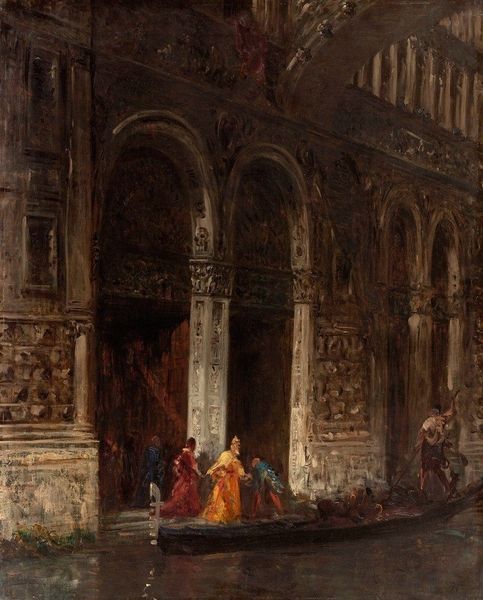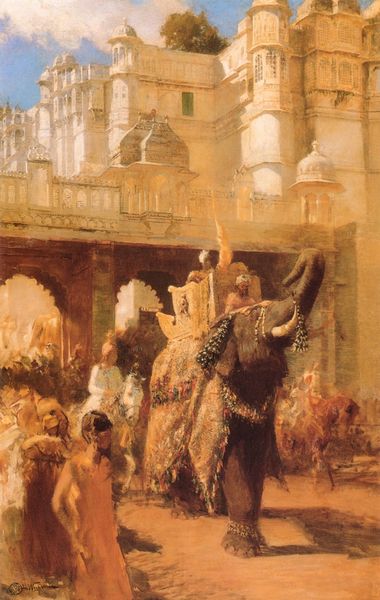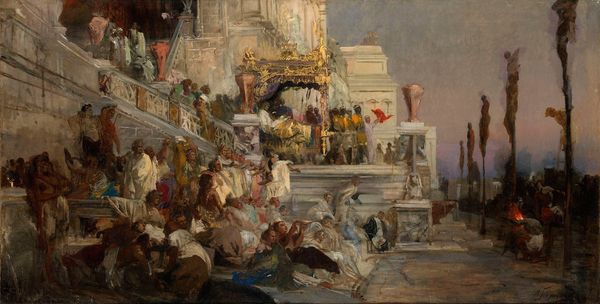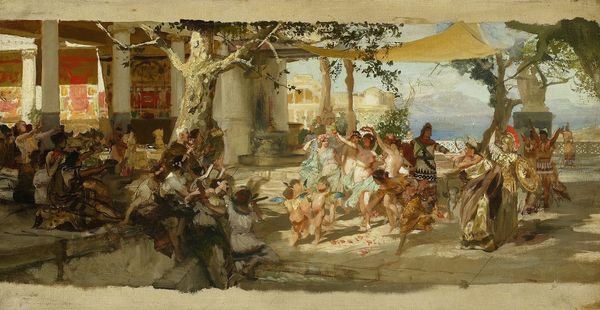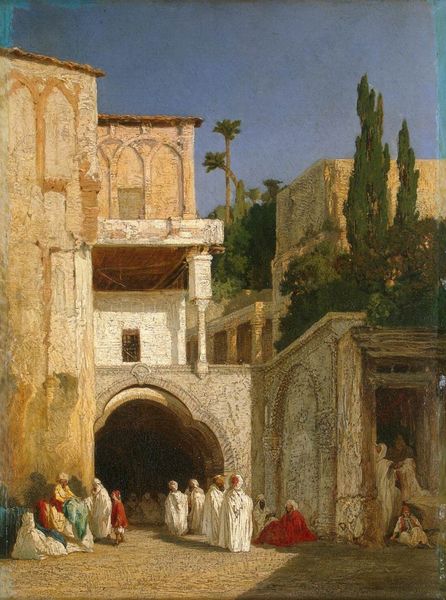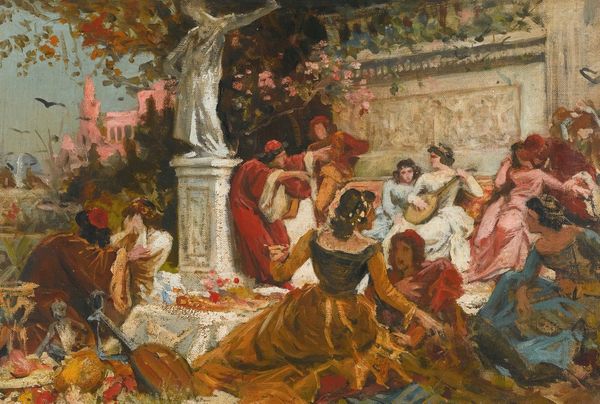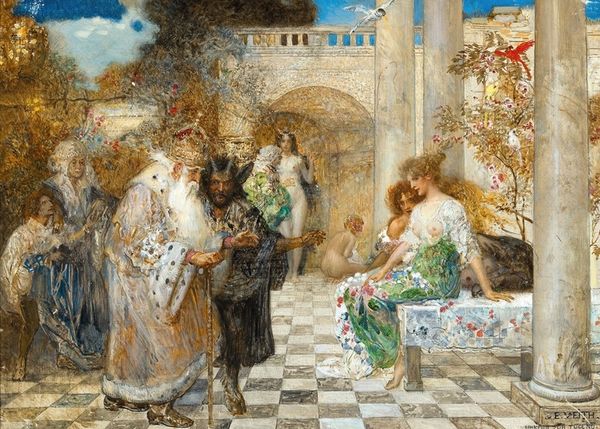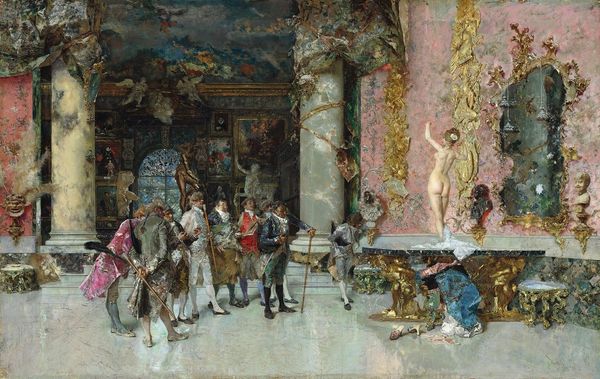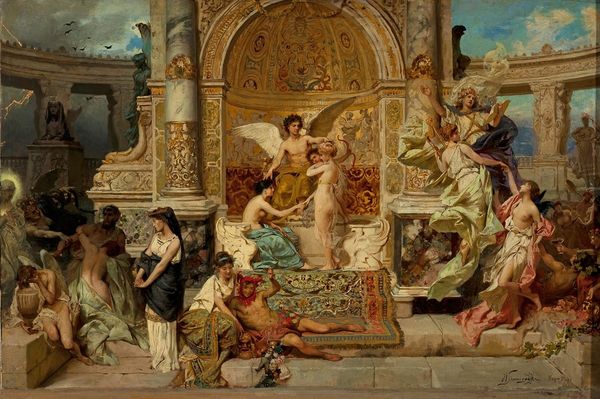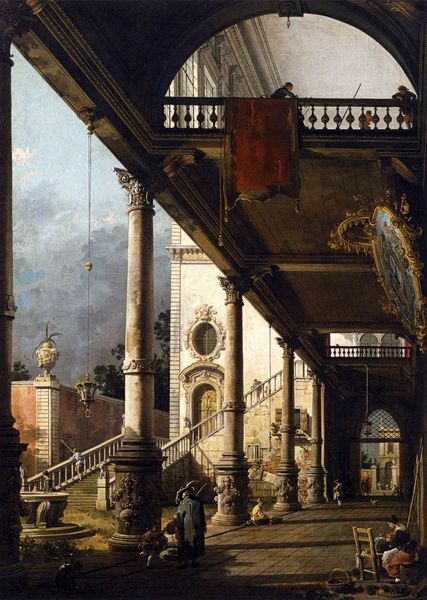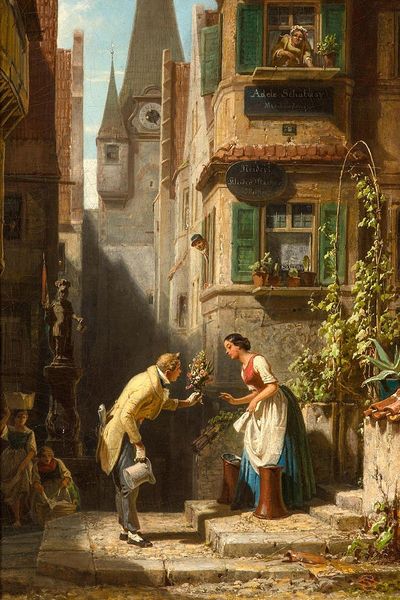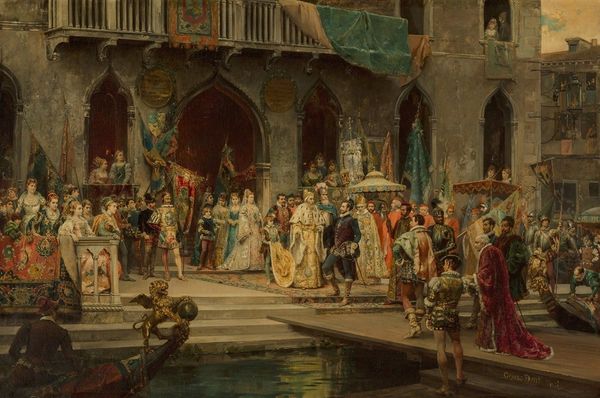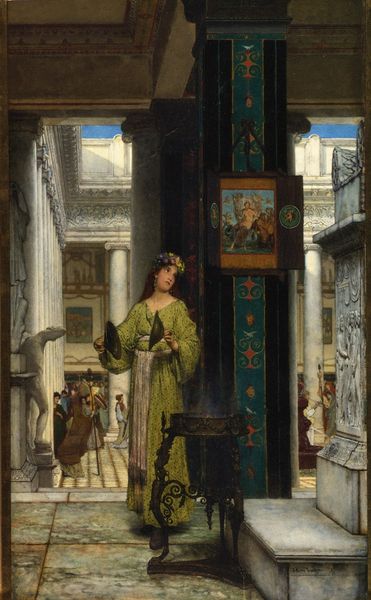
painting, oil-paint
#
figurative
#
painting
#
oil-paint
#
landscape
#
painted
#
figuration
#
romanesque
#
oil painting
#
underpainting
#
genre-painting
#
history-painting
#
academic-art
Copyright: Public Domain: Artvee
Lawrence Alma-Tadema painted ‘Spring’ at the height of his career, an image of ancient Rome conjured from a deep well of source material. Alma-Tadema was fascinated by the everyday life of antiquity. This interest became the subject of his art. The artist’s commitment to historical accuracy was profound, driven by visits to archaeological sites and an extensive collection of photographs documenting Roman life. But we can understand his work as more than a historical document. Produced in England, at the height of its imperial power, ‘Spring’ visualises an ideal of civic life rooted in classical antiquity. The celebration, the architectural order, and the prominence of marble all speak to a vision of social order that was explicitly connected to the artist’s present. Understanding a work like this requires us to explore the artist's sources, the cultural context of its production, and the political resonance of its imagery.
Comments
No comments
Be the first to comment and join the conversation on the ultimate creative platform.
